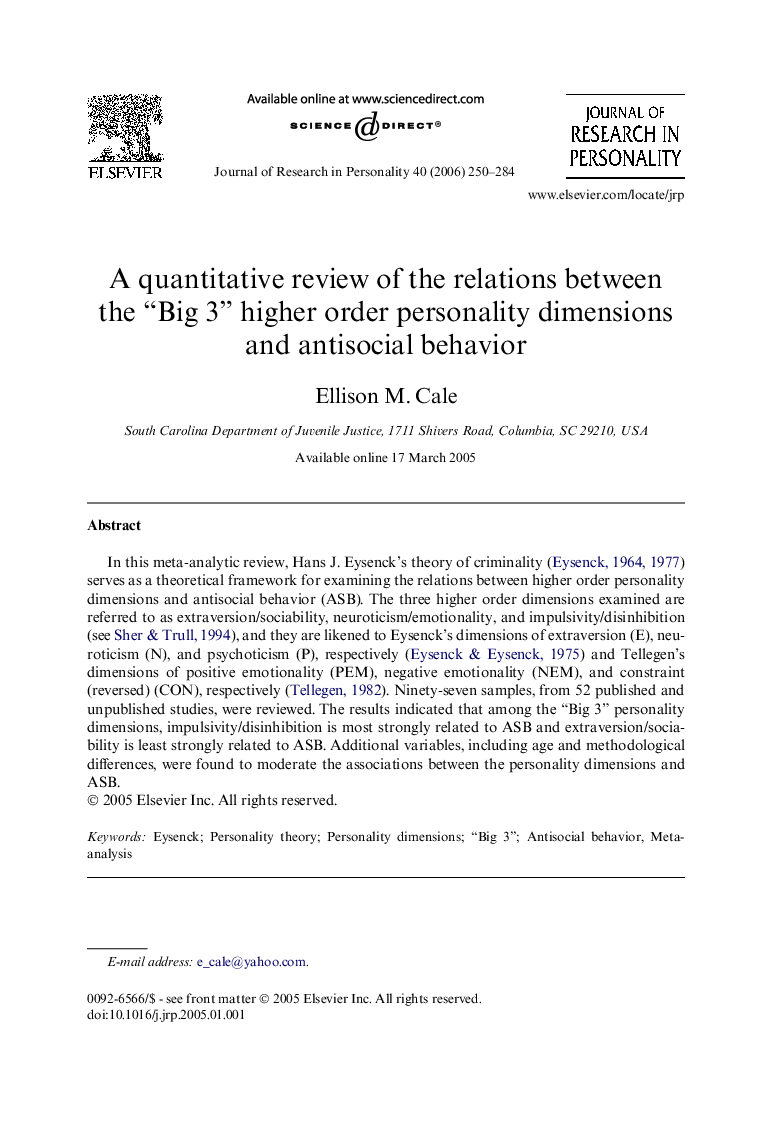| Article ID | Journal | Published Year | Pages | File Type |
|---|---|---|---|---|
| 952129 | Journal of Research in Personality | 2006 | 35 Pages |
In this meta-analytic review, Hans J. Eysenck’s theory of criminality (Eysenck, 1964 and Eysenck, 1977) serves as a theoretical framework for examining the relations between higher order personality dimensions and antisocial behavior (ASB). The three higher order dimensions examined are referred to as extraversion/sociability, neuroticism/emotionality, and impulsivity/disinhibition (see Sher & Trull, 1994), and they are likened to Eysenck’s dimensions of extraversion (E), neuroticism (N), and psychoticism (P), respectively (Eysenck & Eysenck, 1975) and Tellegen’s dimensions of positive emotionality (PEM), negative emotionality (NEM), and constraint (reversed) (CON), respectively (Tellegen, 1982). Ninety-seven samples, from 52 published and unpublished studies, were reviewed. The results indicated that among the “Big 3” personality dimensions, impulsivity/disinhibition is most strongly related to ASB and extraversion/sociability is least strongly related to ASB. Additional variables, including age and methodological differences, were found to moderate the associations between the personality dimensions and ASB.
